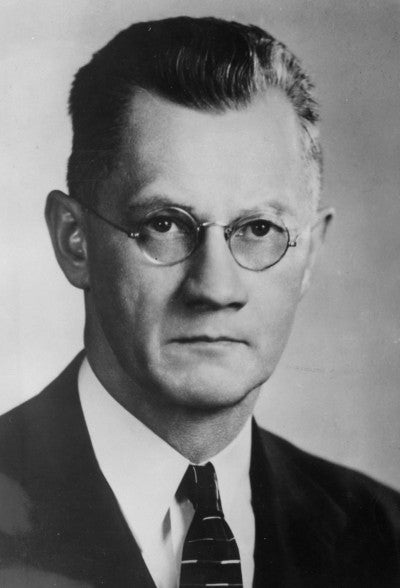
Academic Head
Paul E. Hemke was born in Petersburg, Illinois, on May 22, 1890 to Emil and Hedwig Keller Hemke. He graduated from Central Wesleyan College, Warrenton, Ohio, in 1909. Intermixing his graduate studies with teaching, he took an M.A. at the University of Chicago in 1917, and a Ph.D. at Johns Hopkins in 1924, majoring in mathematics. He started his teaching career at Sheboygan High School in Wisconsin, and moved to higher educational institutions including such diverse places as Georgia Institute of Technology, Northwestern University, U.S. Naval Academy and Case School of Applied Science, in addition to Rensselaer. During the period 1924 to 1927 he was employed by the National Advisory Committee of Aeronautics at Langley Field, Hampton, Virginia where he worked with the distinguished aerodynamicist Dr. Max Munk. He received a Guggenheim Fellowship for 1927 to 1929 which took him to the University of Cambridge. During this same period he visited universities in Britain and on the continent which were engaged in pioneering research in aerodynamics. These visits enabled him to meet distinguished foreign colleagues such as Ludwig Prandtl and Theodore von Kármán. Paul Hemke came to Rensselaer from Case in 1935 as professor of mechanical engineering and in 1936 became the first department head of aeronautical engineering. He personally designed and constructed a scale-model wind tunnel which was used to check out the design of the 4×6 foot test-section tunnel located in the then new engineering building, named for Palmer Chamberlain Ricketts. The Department of Aeronautical Engineering was staffed by men personally selected by Hemke with the major emphasis on quality instruction. Students from the Hemke era occupied engineering positions of major importance in industry and government, and particularly at NASA.
Among his publications was the text book “Elementary Applied Aerodynamics”, published in 1946. This was widely used and praised by colleagues around the United States. His acquaintanceship with von Kármán led to his appointment as a member of the U.S. Army’s “Kármán Budget Index Mission” to survey German aeronautical accomplishments, and to evaluate the German scientific research program. Results of the survey led to formation of the Air Technical Index.
In 1950, Hemke was appointed Dean of Faculty and under his leadership the Institute’s graduate activities greatly expanded. In 1956 he was appointed vice president, in 1957 to the additional post of provost. During that time the educational departments were organized into what are now the individual schools of engineering, science, architecture, and humanities and social sciences. A little known fact is that in a scholarly analysis of the administrative/faculty structure at Rensselaer, Dr. Hemke in 1957 recommended formation of a Faculty Senate.
Dr. Hemke served in these positions until his retirement in 1958. However, his desire to return to teaching found an outlet in the Department of Mathematics where he taught part-time until 1963. Hemke’s intellectual qualities and devotion to high principles were matched by an attitude of kindness and fairness in dealing with his colleagues and students. Hemke died May 25, 1974 in Alexandria, Va. at the age of 84.
